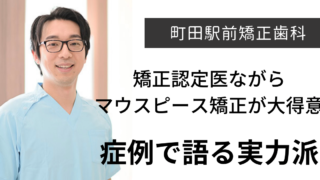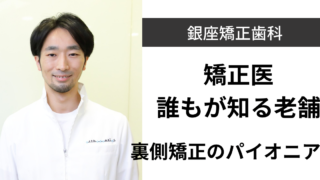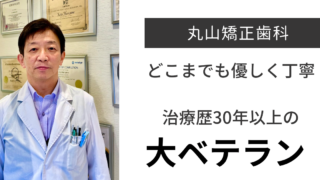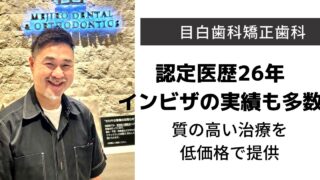In a nutshell, TMJ disorder is pain and discomfort in the jaw, but there are many causes.
There are various ways to treat TMJ disorder, but this section will explain what types of TMJ disorder can be effectively treated with stretches that can be easily performed at home.
1) What is the temporomandibular joint?

The temporomandibular joint is a joint connecting the lower jaw bone to the temporal bone, which is part of the skull.
As the name implies, this joint moves with the movement of the jaw.
It is also the only joint in the human body in which both joints move in tandem.
The TMJ joint has cartilage called articular discs between the joints to facilitate smooth movement, and a great number of muscles are densely packed around the TMJ joint.
(2) What is TMJ disorder? What are its symptoms? Which of them can be cured by stretching?

TMJ disorder is a disease that develops when some problem occurs in the jaw joint.
Symptoms of TMJ disorder include,
Pain in the TMJ itself and,
Pain when opening and closing the mouth,
Impaired mouth opening (inability to open or close mouth wide),
These are joint sounds (clicking sounds) when opening or closing the mouth, etc.
For TMJ disorder
It is caused by bone deformities and,
It is caused by tension in the muscles that move the temporomandibular joint, resulting in poor movement,
It is caused by poor movement of the articular disc,
Tumor or other growths around the temporomandibular joint (TMJ) that cause poor movement, etc,
There are various causes.
By no means is stretching effective for all TMJ disorders.
3) Is stretching effective in improving TMJ disorder?

The treatment of TMJ disorder is a ma
Mouthpiece therapy in which a mouthpiece is made to rest the TMJ,
Medications such as analgesics and muscle relaxants are prescribed for pain and muscle symptoms,
Surgical removal of tumors and other growths, and
Surgical therapy to improve TMJ movement,
Then there is palliative therapy with stretching.
There are two types of TMJ arthritis that can be cured by stretching: those caused by poor movement due to tension in the muscles that move the TMJ, and those caused by poor movement of the articular disc.
Conversely, anything else will not be cured by stretching alone.
4) Five stretching methods for TMJ disorder!
Opening and sliding stretches improve the movement of the articular discs, while tongue stretches, neck stretches, and masticatory muscle stretches relieve muscle tension.
❶Opening Stretch
Open your mouth as wide as you can comfortably. Hold it open for 10 to 15 seconds.
Then, keeping the mouth open, thrust the lower jaw forward.
Hold it in that position for another 10 to 15 seconds.
Then close the mouth, keeping the lower jaw forward. Once the mouth is closed, return the lower jaw to its original position.
This is an effective stretch when the articular disc is not moving properly.
❷Slide Stretch
Move the jaw to the left with the mouth in the "I" position.
Hold that position for 10 seconds and return to the original position. Next, move the chin to the right and hold that position for 10 seconds.
Next, open your mouth wide and move your jaw to the left while keeping it open.
Hold that position for 10 seconds and then return to the original position with your mouth still open. Next, move the jaw to the right and hold that position for 10 seconds. Finally, close the mouth.
It not only improves the movement of the articular disc, but also relieves tension in the masticatory muscles.
❸Stretching the tongue
Slowly rotate the tongue clockwise to trace the outer gums with the mouth closed.
Do the same counterclockwise. Approximately 10 times is a good rule of thumb.
You can also stretch your tongue by sticking it out, holding it in for about 10 seconds, and then moving your tongue from side to side.
Stretching the tongue can take tension out of the supraspinatus muscle group, the muscle used to open the mouth.
❹Stretching the neck
Place one hand on the top of your head and tilt your face toward the hand on the top of your head.
At this point, tilt the head so that the ears touch the shoulders.
The other hand is extended toward the floor.
This state.Continue for 15 to 30 seconds.
Next, in the same position, tilt your head forward and downward, this time looking aside.
Continue this position for 15 to 30 seconds as well. When one side is finished, do the same with the other side.
This stretch stretches the sternocleidomastoid and other muscles.
❺ Stretching of masticatory muscles
The masticatory muscles are the muscles that move the jaw joint, especially when closing the mouth.
Among the masticatory muscles, the temporalis and masseter muscles can be easily touched from the outside, making it easy to relieve them when they are strained.
To massage the temporalis muscle, place the palm of the hand on the area slightly anterior and superior to the face and massage slowly in a clockwise direction, drawing a circular motion.
After completing about 10 repetitions, do the same in a counterclockwise direction.
Massage the masseter muscle by placing your palm on the cheek area to locate the masseter muscle, as the masseter muscle is present in the area of the cheek where it moves significantly when you bite down.
Once the masseter muscle is located, slowly massage it in a clockwise direction in the same manner as massaging the temporalis muscle, rubbing in a circular motion.
After completing about 10 repetitions, do the same in a counterclockwise direction.
5) Three points to prevent TMJ disorder

Do not create ❶ bad habits
One of the causes of TMJ disorder is oral vices such as cheekbiting and one-sided biting. Oral habits can put stress on the TMJ and cause TMJ disorder. Avoiding oral habits is an important factor in preventing TMJ disorder.
Care of ❷TCH
TCH stands for Tooth Contacting Habit, and refers to the presence of a tooth contact habit, which can put stress on the TMJ itself and cause TMJ disorder. TCH can also cause TMJ disorder by wearing down the teeth and lowering the bite. For the same reason, clenching and grinding can also cause TMJ disorder, so care is needed to avoid tooth-to-tooth contact and to make a mouthpiece for clenching.
❸No stress
Stress is considered one of the major factors in the development of TMJ disorder. When stress builds up, involuntary movements (movements by brain commands that you are not aware of) can put stress on the TMJ joint and cause TMJ disorder to develop.
summary
Once TMJ disorder develops, it is not uncommon for it to reappear, even once cured.
Depending on the cause of TMJ disorder, if it is indicated, stretching, which can be easily done at home, can be an effective treatment method. We encourage everyone to try it at home.
 Written by dentist/issy
Written by dentist/issy
After graduating from the National School of Dentistry, he trained at the Tokyo Medical and Dental University Dental Hospital, and is currently working in general and orthodontic dentistry.
Member of the Japanese Society of Oral Implantology










![Toshima-ku, Ikebukuro] Myozui Orthodontics, Kitahara 10 A9D63899 8BBF 4AC0 A512 781143AF8AE2](https://365dentist.jp/wp-content/uploads/2023/03/A9D63899-8BBF-4AC0-A512-781143AF8AE2-320x180.png)




Comment